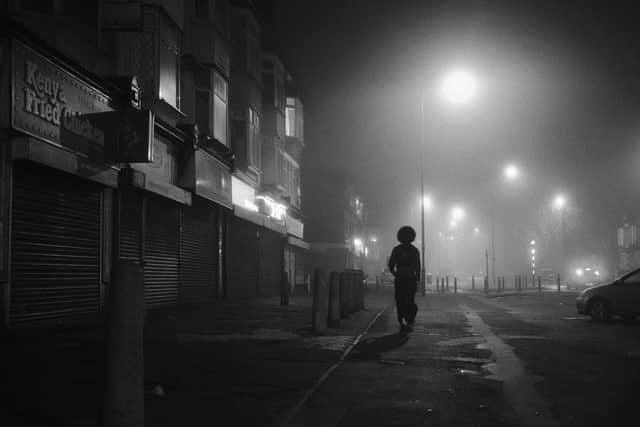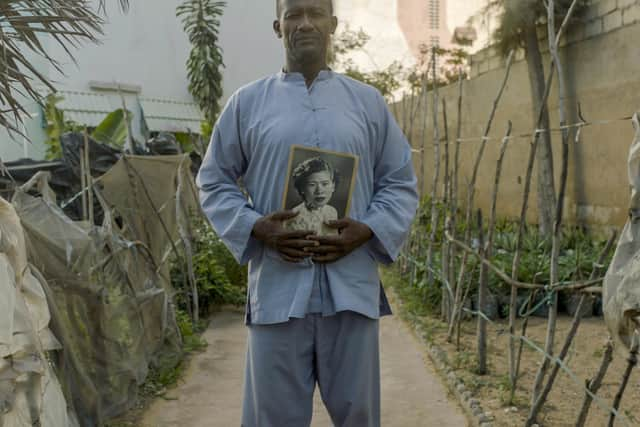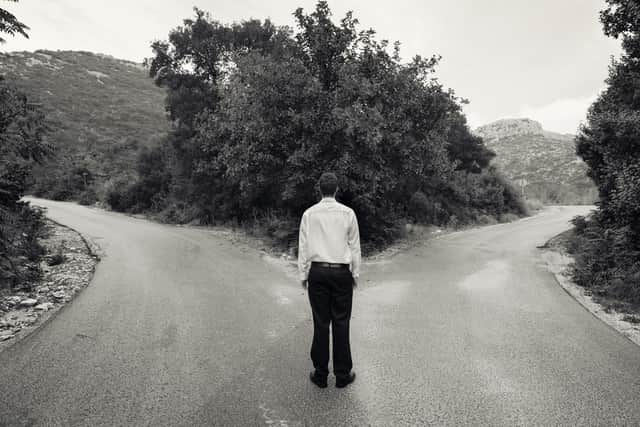Art reviews: Johny Pitts | Tuan Andrew Nguyen | Colin Gray
Tuan Andrew Nguyen: All That We Are Is What We Hold In Our Outstretched Hands, CCA, Glasgow ****
Colin Gray: Caught Between, Street Level Photoworks, Glasgow ***


Advertisement
Hide AdAs lockdown eased in 2021, writer and photographer Johny Pitts and poet Roger Robinson set out on a series of journeys. Over the following months, they travelled, in their red Mini Cooper, around the coastline of Britain seeking to capture the lives of ordinary black Britons. In avoiding the biggest urban centres (although they do visit Edinburgh and Glasgow), Pitts was looking for fresh narratives, not sports stars or celebrities, not stories of hardship either, but something more akin to the everyday multiculturalism he grew up with in his home town of Sheffield.
Pitts’ personal experience becomes central to the way the exhibition Home is Not a Place, currently touring to Stills in Edinburgh, is presented. Visitors will find a “welcoming table” made by his artist sister Chantal, photo albums of family snaps, tunes from mixtapes recorded from a black pirate radio station and a recreation of the Pitts’ living room from the 1980s.
By contrast, the majority of the subjects in the photographs are anonymous and presented without any context or background (although we might recognise supermodel Eunice Olumide, fighting against a gale at an Edinburgh bus stop). They become everyman (or woman), particular and universal: the school kids crowding the camera in the snow, the girls getting ready for carnival, the black policeman on the tube, the young climate activist. Sometimes, faces are hidden or shown through rain-spattered glass; some figures are silhouettes. Yet, in this semi-domestic context, they are also individuals with lives, families, homes and histories which we as viewers can only imagine.
Pitts shoots mainly on film, often favouring winter and low light conditions. The show progresses from daytime through twilight to the dimly lit “living room” at the back of the gallery where the pictures feel at their most mysterious. The effect is cumulative. Rather than encompass something as broad and various as black Britishness, the show gives us a multitude of windows to look through into complex and colourful lives which make it impossible to generalise.


Meanwhile, at CCA, Vietnamese artist Tuan Andrew Nguyen excavates a highly specific chapter of colonial history. In the 1940s and 1950s, soldiers from Senegal, then a French colony, were conscripted to fight for the French in Indochina to subdue the Vietnamese uprising. Stationed there for years, many took Vietnamese wives and started families. After the French defeat, they returned to Senegal, some taking their wives, some only their children, many remarrying Senegalese women. Meanwhile, the women and children, the métis of Senegal, found themselves cut off from their roots and, in many cases, unwelcome in both countries. The aftershocks still reverberate today.
Nguyen worked with people from that community to create his film, The Specter of Ancestors Becoming, commissioned by the Sharjah Art Foundation in San Francisco. He invited them to imagine – and script – missing scenes from their history: a son confronting his father about the mother he never knew, a Vietnamese woman writing to the father of her unborn child, and so on. The stories were then filmed using actors, and are shown in a four-screen installation, interspersed with memories and photographs, imagined scenes from past and present.
Advertisement
Hide AdNguyen is not the only artist to use four screens in a square to suggest fragmented narratives, placing the audience in the middle, but the experience is a frustrating one. One is tormented by the possibility that there really is a complete picture, if only one had eyes on the back of one’s head. There isn’t, of course and that’s the point. This is about imagination and memory, about stories which are, themselves, full of fractures.
By inviting those who live these stories to fill some of the gaps with their imagination, he is opening up possibilities of understanding the past differently. And, if this very specific knot of experience is a microcosm of the bigger colonial picture, this work proposes one more way of approaching a difficult past.


Advertisement
Hide AdConfronting tough experiences is also at the heart of Colin Gray’s exhibition at Street Level Photoworks. Gray began to collaborate with his parents, Ron and Rene, in the 1980s, divising playful tableaux in which they were photographed. After his first show, The Parents, in 1997, came In Sickness and in Health (2010), a more sombre exploration of ageing, and of Rene’s death. This exhibition picks up the story in 2013 when Ron faces a diagnosis of terminal cancer.
In fact, this work, Do Us Part is just one element in a show which includes four photographic series, each with its own distinctive approach. Do Us Part is a brave exploration of mortality created by a father and son as they confront the worst: Ron appears pixellated and ghostly, and clear-eyed, confronting what’s to come. Some of the images themselves seem to be distintegrating; the last one shows his ashes.
Then, in 2017, and again in 2018, Colin became critically ill. In the next two series, he explores what it means to hover between life and death. The black-and-white images in Liminal are dramatic, ethereal, reminiscent of Victorian ghost photographs. Then, in Caught Between, he explores the visions he had when semi-conscious using colour and movement. It feels as if he is pushing photography to the limits to ask questions about the unconscious world, and what it can tell us about the far country beyond.
The final group of photographs, Terms and Conditions, returns us to the present. Back in black and white, he treads a line between mortality and finality on one side, and the cycle of life on the other, the continuing flow from one generation to the next. Here, he uses associative images and landscapes as well as portraits of himself and his son. If, at times, the visual metaphors feel too explicit – the tunnel with light at the end, the bifurcating road, the blacked out window – there is no faulting the courage of the intent, trying to get to grips with some of the biggest questions of all.


Johny Pitts: Home is Not a Place runs until 10 June, www.stills.org; Tuan Andrew Nguyen: All That We Are Is What We Hold In Our Outstretched Hands until 25 March, www.cca-glasgow.com; Colin Gray: Caught Between until 23 April, www.streetlevelphotoworks.org